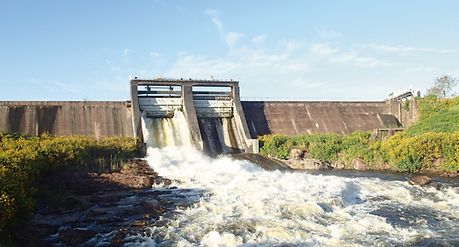The Congo River system dominates the region; its river basin occupies nearly the entire equatorial country collecting water from an area of nearly 3,700,000 km2 (1,400,000 sq mi), an area larger than the whole of India. The Congo has the second-largest flow and the second-largest watershed of any river in the world, trailing the Amazon in both respects.
Since the end of World War II, some 100 medium-sized hydropower plants from 10 MW to 80 MW have been built throughout the country. There are only 16 dams in operation as of today, 12 owned by SNEL, the national utility. Only four are privately owned. The new framework for liberalization of the electricity sector could contribute to government plans to increase electricity access rate of the population in the coming years.
The DR Congo has the largest hydropower potential in Africa and one of the largest worldwide, with a technically feasible potential of some 100,000 MW. Only about 2.5% of this potential has been developed so far. More than 5,000 MW are in planning, including hydropower plants such as HPP Inga 3 (4,230 MW), HPP Luapula (900 MW), HPP Ruzizi 3 (147 MW) or HPP Nzilo 2 (120 MW) and HPP Busanga (240 MW).
Currently though, the main focus is on the Grand Inga scheme, for which studies and evaluations are ongoing. With a potential 40,000 MW, the scheme will play a crucial role in the electric power supply for the whole continent, enabling the DR Congo to export power to Egypt, as well as South Africa via long distance transmission lines.





